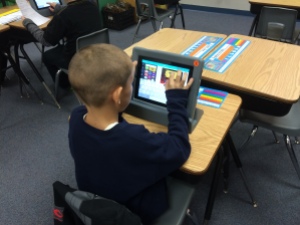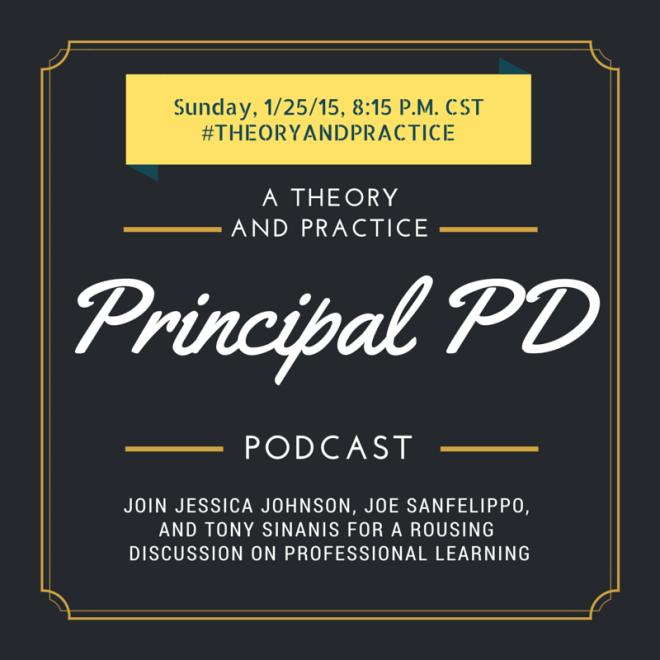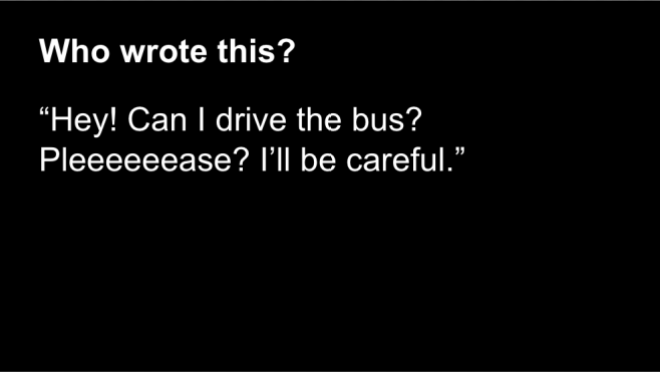
We were never born to read. – Maryanne Wolf
Creating Digital Authors by Melody Zoch, Brooke Langston-DeMott, and Melissa Adams-Budde (Phi Delta Kappan, November 2014)
Three literacy education professors see opportunities that technology can afford in today’s classrooms. They draw on others’ work in defining new literacies:
New ways of reading and writing made available by technology, as well as the competencies associated with them, such as design, navigation, and collaboration.
The authors conducted research in elementary classrooms, creating digital writing camps for students. They documented several benefits to infusing technology into writing. One example is some students were viewed as technology experts. Although they had not been recognized as strong writers in the past, these students saw themselves as successful in their roles of helping peers translate ideas into publish-ready pieces. Subsequently, teacher instruction was not always necessary.
Another benefit realized during this study was the motivation students displayed for learning with technology. One student noted that using the computer “helped me feel more creative”. Another student liked the fact that writing in a digital format was a fresh alternative to their school experiences:
I think I’m just bored of writing with paper and pencil because it’s what I always use.
Both students and researchers also noted how technology allows for mistakes to be made while writing, supporting the iterative nature of this discipline. The authors conclude their article by noting that “teachers don’t need to be technology experts to do this; students are quite motivated to learn through exploration and collaboration. They acutally might learn best this way.”
From Literacy to Literacies by Itoco Garcia (Reading Today, January/February 2015)
The International Reading Association has changed their name to the International Literacy Association, or ILA. Garcia finds this shift is about more than just technology. “Conceptions of literacy are rooted in language and culture and have been used to distinguish between classes and deny or confer opportunity since Roman times.” Equitable access to powerful instruction is a part of this shift as much as anything else.
To be clear, “ILA defines literacy as the ability to identify, understand, interpret, create, compute, and communicate using visual, audible, and digital materials across all disciplines and in any context.” Garcia takes special note of the opportunities that can be provided for students with a broader definition of literacy. When teachers understand how different cultures may interact and utilize tools for reading and writing, what it means to be literate is redefined.
Level Up with Multimodal Composition in Social Studies by Bridget Dalton (The Reading Teacher, Dec 2014/Jan2015)
This associate professor worked in tandem with a classroom of primarily Spanish-English emergent bilinguals. They set out to clear up a misconception with their students, that writing is only something you do in schools.
The educators took a writing project already in place and redesigned it. Three questions were asked before starting this project:
1. What’s the role? (multimodal designers)
2. What’s the task? (an eBook anthology on their native Colorado)
3. What’s the tool? (Book Creator)
The author notes that pedagogy came first, and then the tools. This helped the class “understand the larger purpose and context before starting the process”, as well as to “position the students as experts”.
The Classroom Blog: Enhancing Critical Thinking, Substantive Discussion, and Appropriate Online Interaction by Shannon Baldino (Voices from the Middle, December 2014)
A high school English teacher explores the ups and downs of implementing blogging in her classroom. Baldino’s goal was to find a way to make homework more purposeful, while at the same time teaching her students digital citizenship skills. What she found was the work involved in monitoring student writing was no less when compared to just pencil and paper. However, the benefits of student engagement, more writing produced, and deeper learning made the experience worth it.
Baldino recognized that the language used in online spaces was not always conducive to productive conversations. Therefore, she explicitly taught her students how to communicate in respectful ways with peers in the comments. Students expressed appreciation for her methods. As one student noted:
Blogging made me more conscious and aware of other people’s feelings online, where it is especially hard to understand others.
The teacher was also creative in the activities she assigned to her students. For example, she wondered aloud if Paul Revere’s ride might have benefited from having access to the social media tool Twitter. The follow-up posts and comments not only deepened the students’ learning about this topic, but also gave them a chance to apply their digital citizenship skills within a meaningful context.
Why Your Students Forgot Everything On Your PowerPoint Slides by Mary Jo Madda (edSurge, January 19, 2015)
In this accessible article, Madda highlights the drawbacks of teachers just throwing their notes on slides to read aloud for a future lecture. First, learners cannot mentally handle the cognitive load of both text and auditory information with dexterity. Instead, Madda suggests keeping slides text-based or not at all to ensure learning is transferred to students:
The duplicated pieces of information–spoken and written–don’t positively reinforce one another; instead, the two effectively flood students’ abilities to handle the information.
The author also notes the benefits of keeping things strictly visual in slideshows, with accompanying verbal explanations. “Mixing visual cues with auditory explanations (in math and science classrooms, in particular) are essential and effective.” If teachers choose this method with visuals, it is also important that the speaking and listening resembles a dialogue.
Delivering content in a conversational tone will increase learning.
Defining literacy today…
As I was preparing my slides for our staff professional development day, I started to realize that it was getting a bit wordy. Although the topic was about creativity and writing, the quotes I was including from profound educational thinkers took up a whole slide each. My follow up questions were falling flat.
In a spark of ingenuinity, my wife had an idea for keeping things simple. She suggested listing quotes from books of well-known authors, and then having the staff try to guess the source. The idea would be that through recognizing authors’ voices, we might better assess how well we can recognize our own students’ voices in their writing. Of course, it went over very well.
I am a novice as I write about new literacies. There is much I have to learn. What I do know at this time is literacy is about more than text. That genie is not going back into the bottle. The definition of literacy has expanded at a similar rate as technology. New ways of communicating are being developed as we speak (or read?). Concepts such as blogging and digital citizenship have become critical communication skills in a short amount of time.
So it begs the question: If schools are not using these tools during instruction, are they depriving students of necessary global and cultural learning experiences? However, if the extent of technology integration is a basic slide show that simply regurgitates facts, would we be better off without these digital tools? I am going to continue to ponder these questions as I build a better understanding of literacy in the 21st century.


3 responses to “New Literacies”
[…] New Literacies (Theory and Practice, January 17 and January 24, […]
Matt,
As always, you raise worthwhile questions as you give your readers thoughtful resources and useful information. The fact that you, a tech expert, and still figuring out how to best use digital literacies is humbling and encouraging for the rest of us.
Warm regards, Regie
Yes, I definitely have more questions than answers. Thank you Regie for commenting.